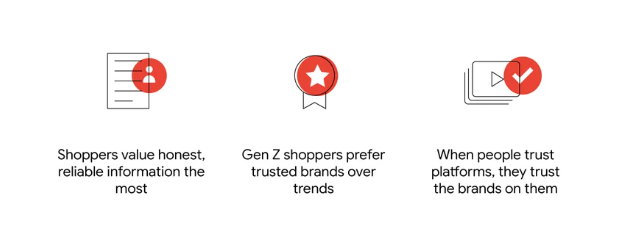A few weeks ago, I experienced a quintessential New York moment. I was double parked on the busy street outside my New York City apartment, desperately trying to install a car seat I had recently purchased for my 3-year-old daughter. At any moment, I knew I could be honked at for blocking other cars.
So I quickly whipped out my phone and headed to the Car Seat Lady on YouTube, a channel I frequently consult when I’m in the market to buy a new car seat and in stressful parenting moments like this. There, I knew I could find step-by-step instructions and incredibly accurate estimates of how long it would take someone like me to install a brand-new car seat in a high-pressure situation.
My experience isn’t unique. People all over the world turn to YouTube for help with products they just bought. In fact, they’re relying on YouTube for guidance and information during every part of their shopping journey, whether they’re watching unboxing videos, getting product reviews, or learning from how-to videos. This is particularly true of Gen Z, who say that YouTube is more likely than other video and social media platform to meet their top shopping needs.1
But what exactly makes YouTube such a magnet for shoppers? And how can brands benefit from this close relationship between YouTube and its audience? To find out, we partnered with Talk Shoppe to conduct an extensive, qualitative research study and surveyed thousands of video users in the U.S. From our findings, we’ve extracted three shopping insights that can help build brand loyalty and create repeat customers on YouTube.
Shoppers value honest, reliable information the most
Yes, discovering new and exciting brands online is important to shoppers. But what they value even more is finding reliable, trustworthy information that will help them buy a product with confidence. And, according to our research, viewers say YouTube ranks no. 1 against video services and social media platforms in key shopping needs, like finding honest information and feeling good about their purchases.2
YouTube creators are a large part of the reason why people view the platform as a source of solid information, with 87% of viewers agreeing that YouTube creators give recommendations they can trust.3 As one of our survey participants said, “YouTubers often give updates on how the product is doing three, six, or 12 months after purchasing, and they also will warn you about things to look out for.”
To explore this further, we spoke with creator-turned-entrepreneur Cassey Ho about how building trust with her YouTube followers contributed to the success of her direct-to-consumer brand, Popflex.
For over 13 years, Ho established herself as an authentic, trustworthy creator and CEO by sharing free workout videos on her Blogilates YouTube channel. “Fans would see me wearing my products or showcasing them in the background. They started asking me for a longer hoodie or a hoodie with a bigger hood to cover their long hair. What has really helped me build trust … is that I will take those comments as inspiration to develop my products. People felt heard.”
Gen Z shoppers prefer trusted brands over trends
When we asked Gen Z what they prioritize when they shop using video or social platforms, they ranked finding a brand they love significantly higher than finding something trendy.4 This, of course, is great news for brands who hope to become a go-to destination for Gen Z and other shoppers. But exactly how do they become that universally loved brand? They can achieve this by creating a positive shopping experience that encourages people to buy from them again and again.
The key to a positive shopping experience is giving people product information they can trust, which will make them more satisfied with their final purchase. And our research showed that YouTube helps brands build this basis of trust. As one of our Gen Z survey participants stated, “After buying something that I’ve actually done research on [through] YouTube, I don’t think I’ve ever returned anything.” YouTube also helps brands win customers’ loyalty, with 85% of people who use YouTube in their shopping journey saying they have purchased or planned to purchase a brand again.
When people trust platforms, they trust the brands on them
While shoppers trust creators’ recommendations and the information they find on YouTube, can the same be said about video ads? As part of our research, Talk Shoppe conducted a test to find out how people really feel about the ads they see. They created an ad for an imaginary coffee brand and showed survey participants how this ad might look on different online platforms. Participants were then asked to quickly associate the brand in the ad with certain words.
The test results showed that people trusted a brand much more when they saw it on a platform they trusted. More specifically, ads on YouTube were rated significantly more trustworthy, established, and credible than they were on every other platform.6 Thus, our research shows that brands can enjoy a halo effect — positive association — from the platforms or services they advertise on, which is vital information for brand marketers who want to get the most out of their media dollars.
These three shopper insights can help brands leverage the implicit trust people have in YouTube and its creators. By tapping into the satisfaction shoppers have when YouTube is part of their shopping journey and by benefiting from YouTube’s halo effect, brands can turn one-time buyers into long-term loyal, repeat customers.
Taken from: https://www.thinkwithgoogle.com/marketing-strategies/video/build-brand-loyalty/





